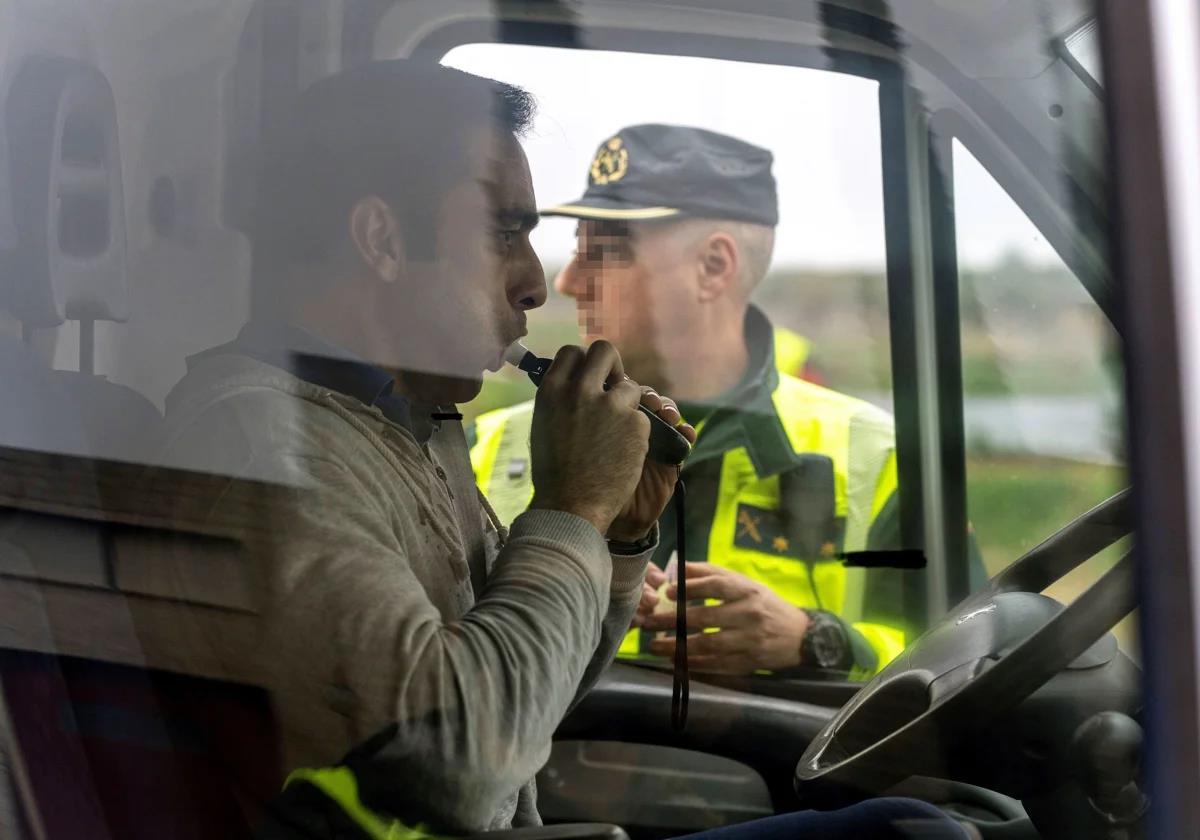

Sections
Highlight

Alfonso Torices
Madrid
Friday, 11 April 2025, 15:45
Road deaths linked to alcohol consumption continue to rise in Spain, as drunk drivers and pedestrians cause more and more serious accidents every year, resulting in more victims.
These are the conclusions of a traffic research report issued by the University of Valencia - a scientific and practical analysis, which highlights the need for Congress to speed up the debates and pass the law that will lower the legal alcohol limit for driving from 0.25 milligrams per litre (0.5 grams per litre of blood) to less than half that, to 0.1 milligrams (0.2 grams in blood).
In order to illustrate this negative trend, experts compare the Spanish accident figures for 2018 with those for 2022. In 2022, 312 people died in road traffic accidents linked to alcohol consumption, either by the driver or by a pedestrian, which means that the number of fatalities shot up by 39% in just four years, with 87 more.
The problem is not only that there are many more deaths in accidents due to drunk drivers, but also that they have an increasingly greater weight in the total number of fatal accidents in the country (18%). This is five points more than in 2018. Up to a third of all drivers who died in Spain within a year tested positive for alcohol in the autopsies carried out by the Institute of Toxicology.
The report finds that the combination of alcohol and driving in Spain leads to more deaths every year, but also more and more serious accidents. In the four-year period studied, drink-related traffic accidents increased by 20%, with 4,283 in 2022, but the number of victims also increased by 16%, with 6,481 deaths and injuries, 898 more than just four years earlier.
These tragic figures should come as no surprise considering the multiple deficits that drinking and driving can cause. "Alcohol, even in small quantities, can impact vision, coordination, reaction time, risk perception, decision-making, tendency to get distracted, manoeuvring precision, fatigue and driver behaviour, among many other issues," said Luis Montoro, the study's director.
The positive part of the analysis is that it also provides scientific evidence of how the reduction of the maximum alcohol limit now being debated by Congress would be able to increase road safety. Drivers who have consumed alcohol in the quantities that are legal today, up to 0.25 milligrams per litre, are three times more likely to die behind the wheel than those who are sober.
The study makes a reference to Sweden and Norway - the European countries with the lowest accident rates in Europe, where the alcohol limit that Spain could now introduce has been in force for 35 years. When this measure was implemented, it had immediate results: a 12% reduction in accidents with injuries, a further 8% reduction in accidents with fatalities and a 16% drop in positive breathalyser tests. The current figures for driving fatalities confirm the efficiency of the regulation.
Although Spain is one of the European countries with the fewest road deaths, it has an annual rate of 36 per million inhabitants. The rate in these two Nordic countries is around 22 deaths per million inhabitants (63% lower than the Spanish rate).
The authors of the study believe that the most urgent measure to curb alcohol-related deaths on Spanish roads is the rapid approval of the law lowering the maximum permitted limit to 0.1 milligrams per litre.
However, they also believe that, for it to be truly effective, it must be accompanied by other complementary measures, such as a significant increase in random breathalyser checks for both alcohol and drugs, especially in cities. This would be further endorsed by legal reforms that punish drivers who test positive for several substances more severely. In addition, re-education programmes for drivers with alcoholism or habitual heavy drinking are a necessity, because sanctioning alone rarely makes a change.
Director general of the DGT roads authority Pere Navarro, who presented the study, said that "reducing the drink-driving limit is not just a legal measure; it is, above all, a moral commitment to those who have lost their lives on the road and to the families who still suffer the consequences of these accidents". "That is why the time has come to put the debates behind us, to be consistent with our awareness campaigns and to set a limit of 0.1 milligrams per litre which, in practice, equals zero."
Publicidad
Publicidad
Publicidad
Publicidad
Esta funcionalidad es exclusiva para registrados.
Reporta un error en esta noticia

Debido a un error no hemos podido dar de alta tu suscripción.
Por favor, ponte en contacto con Atención al Cliente.

¡Bienvenido a SURINENGLISH!

Tu suscripción con Google se ha realizado correctamente, pero ya tenías otra suscripción activa en SURINENGLISH.
Déjanos tus datos y nos pondremos en contacto contigo para analizar tu caso

¡Tu suscripción con Google se ha realizado correctamente!
La compra se ha asociado al siguiente email
Comentar es una ventaja exclusiva para registrados
¿Ya eres registrado?
Inicia sesiónNecesitas ser suscriptor para poder votar.